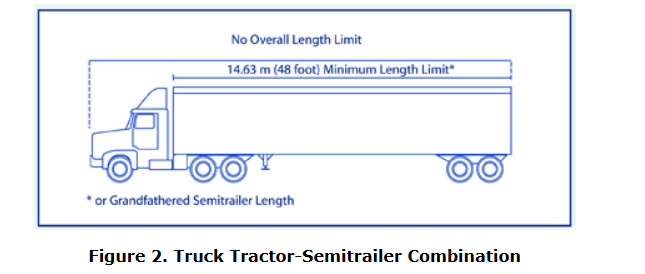
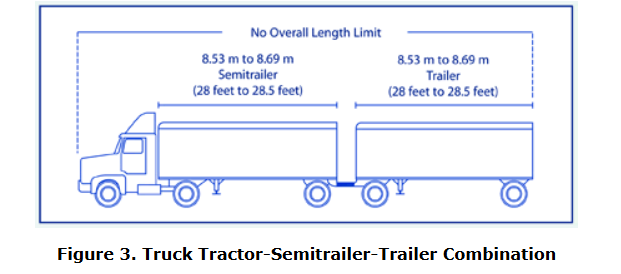
Ever wondered how big those tractor trailer trucks on the highway are? These road giants change how transport works. They can stretch up to 80 feet long and weigh as much as 80,000 pounds. I’m always amazed by their height and width when I pass them. These trucks have many features worth exploring. In my experience, most people miss one important thing about these massive vehicles…
Standard Dimensions of a Tractor Trailer Truck
Tractor trailer truck sizes change based on the trailer type. Here are the main measurements you’ll find:
| Attribute | Details | ||||||||||
|---|---|---|---|---|---|---|---|---|---|---|---|
| Total Length | Between 70-80 feet, combining the cab and trailer. | ||||||||||
| Cab Length | 20-25 feet. | ||||||||||
| Trailer Length |
|
||||||||||
| Width | 8.5 feet (102 inches), the legal maximum width. | ||||||||||
| Height | 13.5-14 feet. Most trailers stand at 13 feet 6 inches to clear most overpasses. | ||||||||||
| Weight Limit | When loaded, a tractor-trailer truck can weigh up to 80,000 pounds. | ||||||||||
| Trailer Types and Dimensions |
|
||||||||||
| Number of Axles | 5 in total (3 on the cab and 2 on the trailer). | ||||||||||
| Turning Radius | About 55 feet for a truck with a 48-foot trailer. | ||||||||||
| Cargo Weight Capacity | Between 42,000-45,000 pounds. This changes with different trailers and how you load the cargo. | ||||||||||
| Special Purpose Trailers |
|
Expert Opinion:
“Truck dimensions matter for road safety and shipping plans. Many people miss how these measurements affect fuel use and emissions. An 80,000-pound loaded truck uses 20% more fuel than an empty truck. Good loading and weight balance improve both safety and cut pollution. From my 25 years working in transport, I’ve seen that better cargo placement can boost fuel savings by 3-5%. This cuts costs and reduces emissions across many trucks. Standard trailer sizes also help with transport between trucks, trains, and ships.“
———— Dr. Michael Richardson , Transportation Logistics Expert with 25+ years of experience and former Director of Fleet Operations at National Transportation Solutions
Variations in Trailer Types and Dimensions
Trucks come in many shapes and sizes to meet different shipping needs. Here’s my breakdown of common trailer types and their specs.
1. Dry Van Trailers
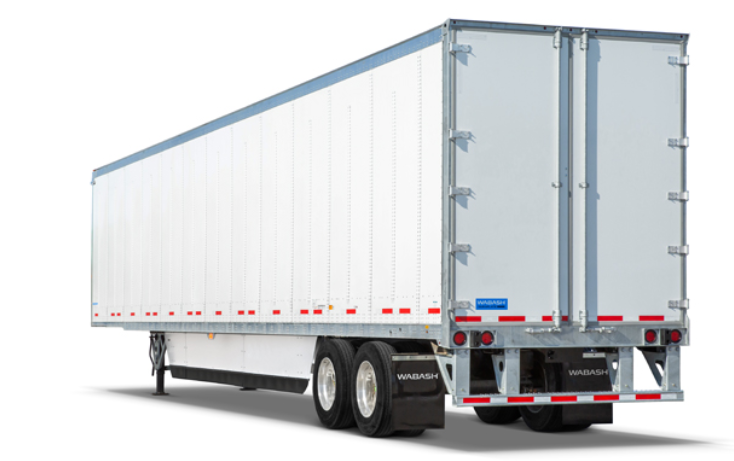
- Length: 48-53 feet
- Width: 8.5 feet
- Height: 13.5 feet
- Cargo Capacity: Up to 45,000 pounds
- Volume Capacity: 3,600-3,800 cubic feet
Dry van trailers are basic box trailers used for shipping boxed and packaged goods. I find these are the most common trailers on highways.
2. Flatbed Trailers
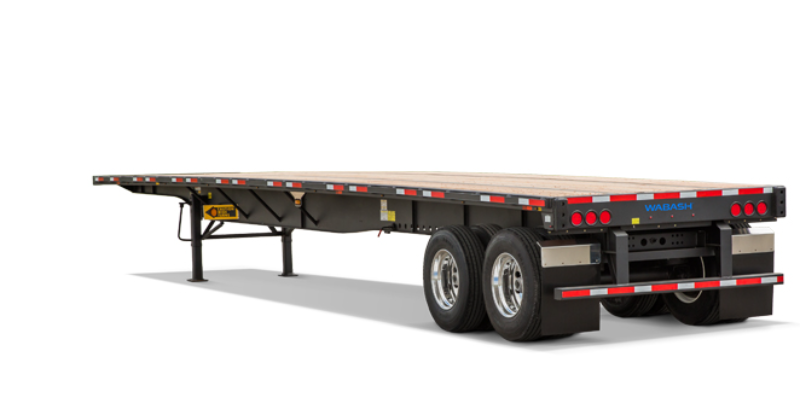
- Length: 48-53 feet
- Width: 8.5 feet
- Cargo Capacity: 48,000-50,000 pounds
Flatbeds have no walls or roof. They work great for big items like lumber, steel, and machines that don’t need weather protection.
3. Refrigerated (Reefer) Trailers
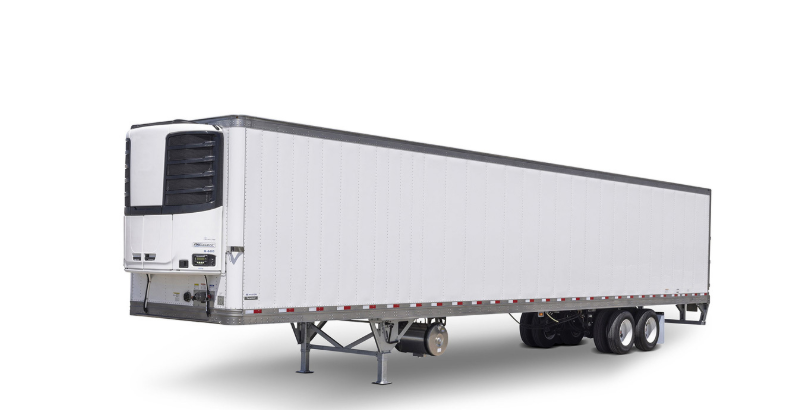
- Length: 48-53 feet
- Width: 8.5 feet
- Height: 13.5 feet
- Cargo Capacity: 42,000-45,000 pounds
Reefer trailers are box trailers with cooling systems. They keep food and other items cold during transport.
4. Lowboy Trailers

- Well Length: 24-29.6 feet
- Deck Height: 18-24 inches off the ground
- Legal Load Height: Up to 11.5-12 feet
Lowboy trailers sit close to the ground. They carry tall or heavy machines like bulldozers.
5. Step Deck Trailers
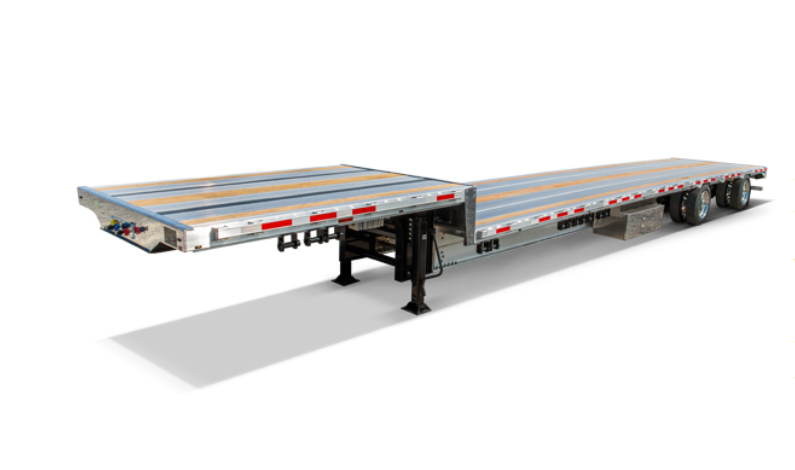
- Length: 48-53 feet
- Cargo Capacity: Up to 48,000 pounds
- Freight Height: Up to 10 feet
Step deck trailers have two deck levels, making them good for taller freight.
6. Tanker Trailers
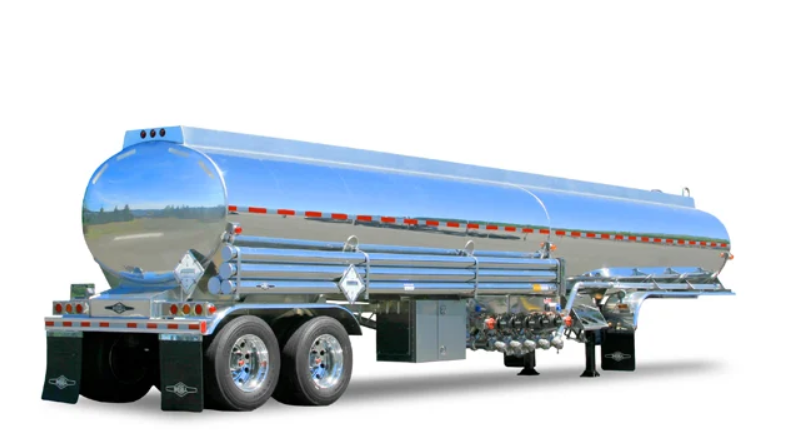
- Length: 42-45 feet
- Capacity: 6,000-9,000 gallons
Tanker trailers haul liquids like gas, milk, or chemicals in their round tanks.
7. Double Drop Trailers

- Well Length: Around 29 feet
- Legal Load Height: Up to 11.5-12.5 feet
Double drop trailers have two drops in deck height to fit tall loads.
8. Specialized Trailers

- Car Carriers: 75-80 feet long; transport 10-11 vehicles.
- Logging Trailers: 39.4-49.2 feet long; payload capacities up to 40,000 kg.
- Intermodal Trailers: 53 feet long; made for easy transfer between trucks, trains, and ships.
Tractor Trailer Size Rules
Maximum Length Limits
- In the U.S., most states cap trailer lengths at 53 feet.
- Some states, like Florida, Alabama, and Texas, allow longer trailers up to 57-59 feet.
- On non-designated highways, many states limit trailers to 48 feet.
- Total length limits for truck and trailer can reach 75 feet in some areas.
Width Rules
- 102 inches (8.5 feet) is the top width for trailers on Interstate highways.
- On smaller roads, the width limit can be 96 inches (8 feet).
Height Limits
- Most U.S. states set height limits between 13.5 and 14 feet.
- Each state sets its own height rules since there are no federal standards.
Weight Limits
- Interstate highways allow up to 80,000 pounds total vehicle weight.
- Single axles can hold 20,000 pounds while tandem axles can hold 34,000 pounds.
- Some states offer permits for heavier loads.
State Rules
- California: Trailers must be 53 feet or less, with 40 feet from kingpin to rear axle.
- New York: Trailers cannot exceed 48 feet.
- Texas: Trailers can be up to 59 feet long.
European Rules
- Maximum length:
- 16.5 meters (54 feet) for semi-trucks.
- 18.75 meters (61.5 feet) for truck-trailer combos.
- Maximum width: 2.55 meters (8.37 feet).
- Maximum height: 4 meters (13.1 feet).
- Maximum weight: 40 metric tonnes (88,184 pounds).
Truck companies must follow both federal and state size and weight rules to stay in compliance.
Tractor Types and Their Impact on Length
Influence of Tractor Types on Length
- Day Cab Tractors: These tractors serve short-haul trips and have no sleeping space, making them smaller. Their lengths range from 20 to 25 feet.
- Sleeper Cab Tractors: Made for long trips, these include beds which make them longer. They measure between 25 and 30 feet, with some up to 35 feet.
- Conventional vs. Cab-Over Tractors: Conventional tractors have hoods that stick out. This makes them longer than cab-over tractors, which have flat fronts.
Popular Tractor Length Examples
I drive a Peterbilt 579 on the highways. It feels powerful. The day cab is 23.5 feet long – big and strong like a steel chariot. The sleeper version is 28.5 feet and serves as my home during trips.
I notice the Freightliner Cascadia feels more compact. Its day cab measures 22.8 feet and handles well for its size. The 28.3-foot sleeper keeps me safe during night drives when I travel alone.
I love the Kenworth T680. Driving its 23.3-foot day cab gives me a sense of control and precision. The sleeper model spans 28.7 feet – the longest of these trucks. I enjoy the extra space inside. It makes long trips more comfortable, like I’m bringing my own space wherever I go.
Effect of Tractor Wheelbases
- Short Wheelbase: Ranges from 167 to 200 inches, creating a more compact truck.
- Medium Wheelbase: Measures 213 to 250 inches. I find these offer good balance between stable driving and easy turning.
- Long Wheelbase: Measures 260 to 300 inches. These give better stability but make the truck longer and harder to turn.
Weight Distribution and Cargo Capacity
Maximum Gross Vehicle Weight (GVW) for Semi-Trucks
In the US, standard tractor trailers can weigh up to 80,000 pounds total. This includes the truck, trailer, and cargo weight. You must spread this weight across the axles: – Steer axle: 12,000 pounds (6,000 pounds per tire) – Drive axle tandems: 34,000 pounds (4,250 pounds per tire) – Trailer tandems: 34,000 pounds (4,250 pounds per tire)
Cargo Capacity by Trailer Type
From my experience, cargo limits change based on trailer type: – Flatbed trailers: Up to 48,000 pounds – Dry van trailers: 44,000 to 45,000 pounds – Refrigerated trailers: 42,500 to 44,000 pounds
Strategic Weight Distribution – A Driver’s Art
In my 15+ years on the road, I’ve mastered the science of weight distribution like a chess game. Moving trailer tandems forward shifts weight to trailer axles—key when I haul heavy cargo in the back. During my steel coil hauls through Pennsylvania, I slid tandems back to move 3,500 pounds to my drive axles, avoiding scale tickets. The fifth wheel matters just as much. I fixed a steering problem in the Rockies by moving mine forward 4 inches. This added 1,200 pounds to my steering axles, giving me better control on tight mountain curves.
Special Truck Setups
Trucks come in many forms beyond regular rigs. I’ve seen Michigan Octopodes—huge 164,000-pound trucks with 8 axles—moving with amazing skill on special routes. Last year in Colorado, I watched a Rocky Mountain Double carrying 127,000 pounds of mining gear. That load would have needed two normal trucks. These special trucks aren’t just larger—they’re clever designs made for specific jobs
Special Considerations for Oversized Loads
I’ve found that moving big loads on tractor trailers needs careful planning to meet safety rules. Here’s what you need to know:
| Category | Details |
|---|---|
| Permit Requirements |
|
| Escort Vehicle Requirements |
|
| Restricted Travel Times |
|
| Route Surveys |
|
| Warning Signs and Flags |
|
| Lighting for Night Travel |
|
| Speed and Lane Rules |
|
| Bridge, Tunnel, and Weather Rules |
|
| Pilot Car Rules by Size |
|
| Detour and Obstacle Planning |
|
International Variations in Tractor Trailer Truck Lengths
European Union
- Standard tractor-trailers can be no longer than 16.5 meters (54 ft).
- Truck-trailer combinations can be up to 18.75 meters (61.5 ft).
- I’ve found that Sweden and Finland make special allowances. They permit trucks up to 25.25 meters (82.84 ft) long.
Australia
- Road trains run in some regions, reaching lengths of 53.5 meters (175.5 ft).
- B-triple configurations up to 36.5 meters (119.7 ft) run on specific routes.
- I’ve seen how special rules allow custom, longer truck setups in certain areas.
Canada
- Truck length limits change by province, ranging from 23-27.5 meters (75.5-90.2 ft).
- Some provinces let longer combination vehicles (LCVs) extend to 38 meters (124.7 ft).
Mexico
- Double-trailer trucks can be up to 31 meters (101.7 ft) long.
- Single trailer trucks must stay under 23 meters (75.5 ft).
United States
- Federal rules limit trailers on the National Network to 53 ft (16.15 m).
- I’ve noticed western states allow longer combination vehicles up to 120 ft (36.58 m).
- Special trucks like auto transporters have different length rules.
South Africa
- Articulated vehicles max out at 22 meters (72.2 ft).
- Road train combinations up to 27.5 meters (90.2 ft) are allowed in select areas.
summary
I’m amazed by how big these trucks are on our highways. Tractor trailers truly shape our daily lives. Most products we use traveled on these huge vehicles. I see their size as more than just numbers – it shows smart engineering that powers our economy. When I see a semi on the road, I notice a transportation masterpiece. These trucks follow rules that create a balance of speed, safety, and usefulness.
FAQS
1. What is the standard length of a tractor trailer truck?
The standard length of a tractor trailer truck (semi-truck with trailer) in the U.S. is around 70 to 80 feet when fully assembled. This includes the tractor (20-30 feet) and the trailer (48-53 feet).
2. Are there legal limits on tractor trailer length?
Yes, federal regulations in the U.S. limit tractor trailers to a maximum of 53 feet for the trailer and no more than 80 feet for the entire combination. Some states allow exceptions for specialized loads.
3. How long is a semi-truck without the trailer?
A semi-truck (just the tractor unit) typically measures 20 to 30 feet long, depending on the cab type (day cab vs. sleeper cab).
4. Why are most trailers 53 feet long?
The 53-foot trailer became the industry standard because it maximizes cargo space while complying with federal highway length restrictions. It balances efficiency, safety, and freight capacity.
5. Can tractor trailers be longer than 80 feet?
In most cases, no—80 feet is the federal limit for standard tractor trailers. However, some states permit longer combination vehicles (LCVs), like double or triple trailers, under special permits or on designated routes.





